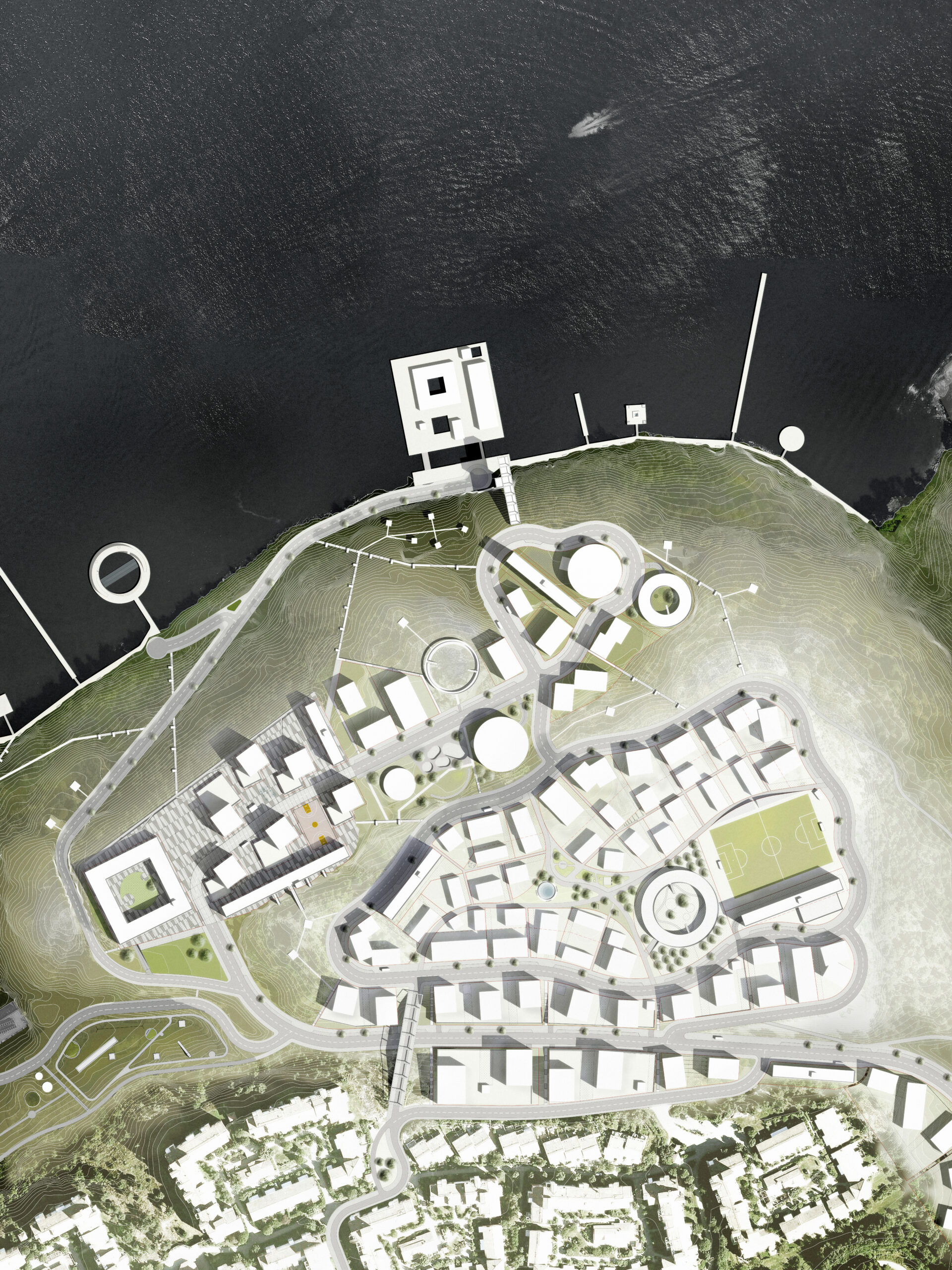
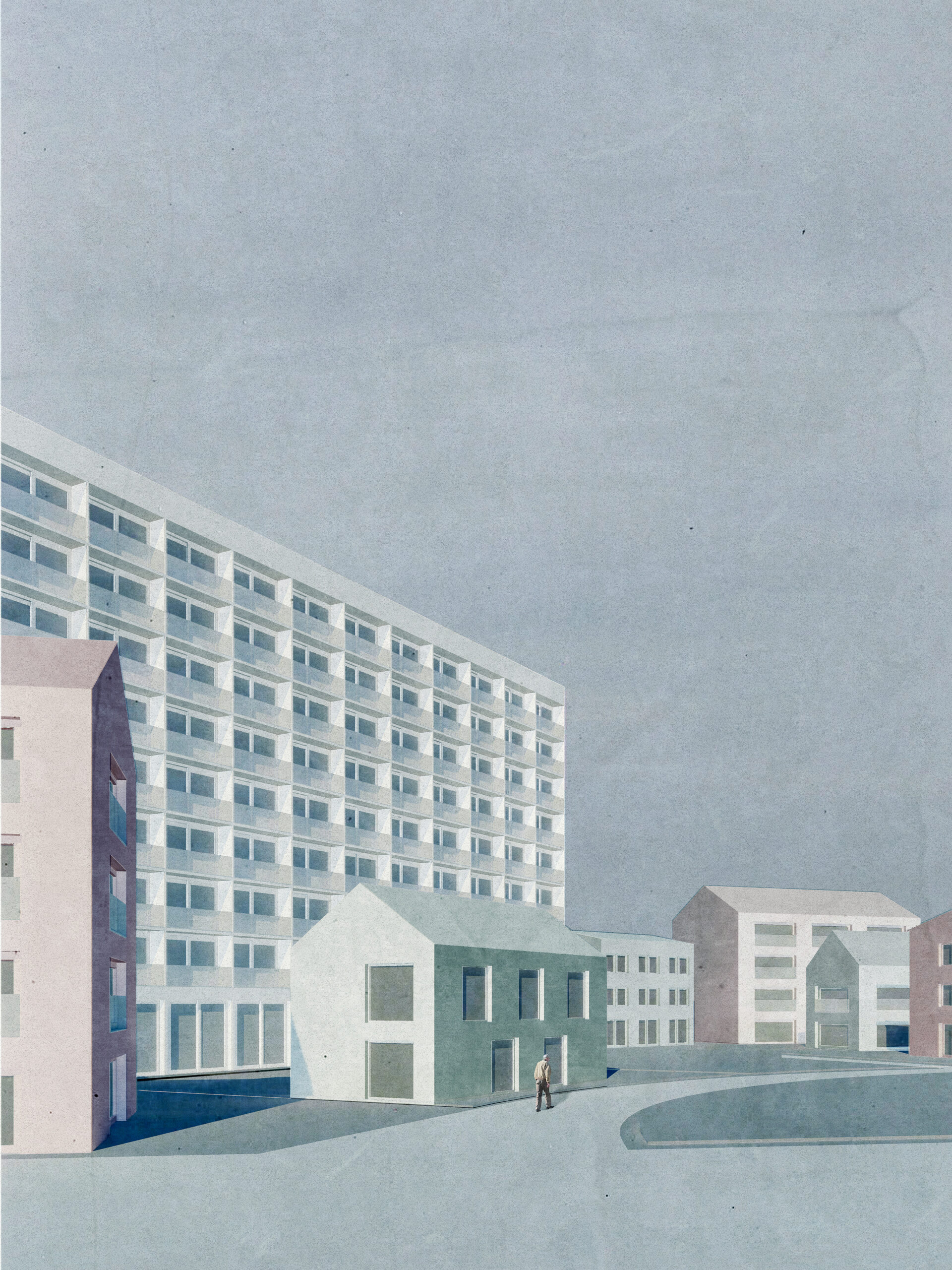
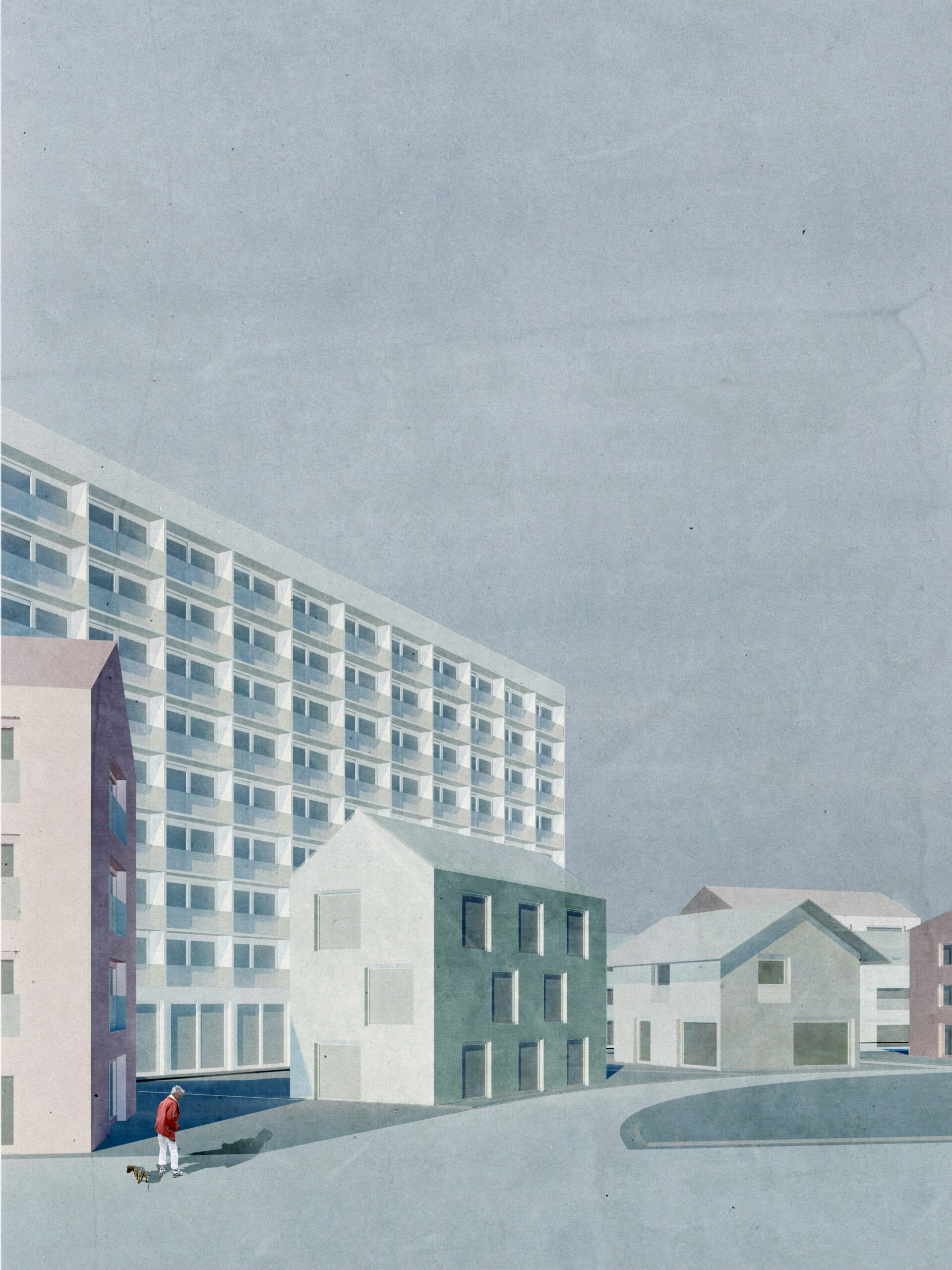
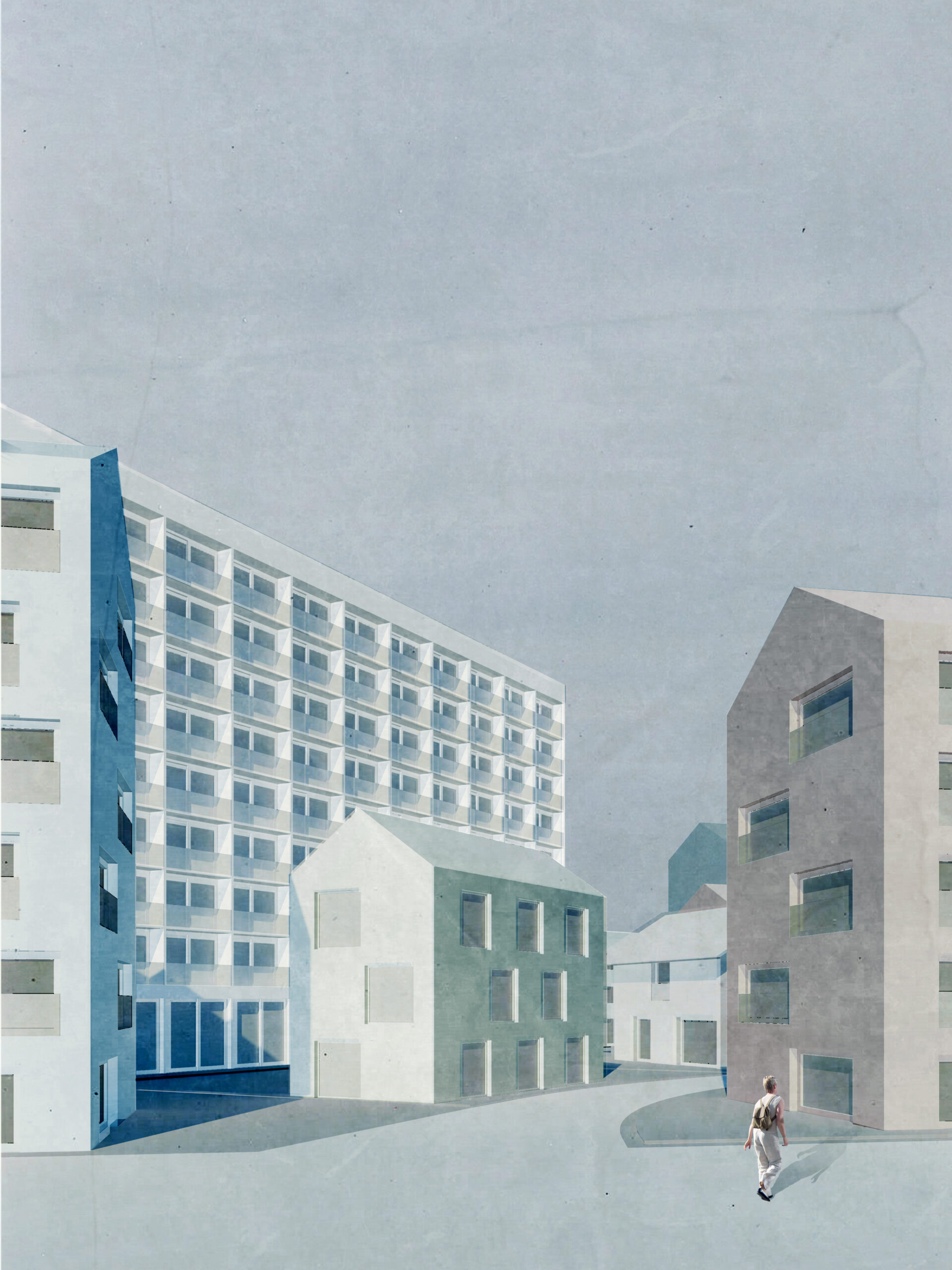

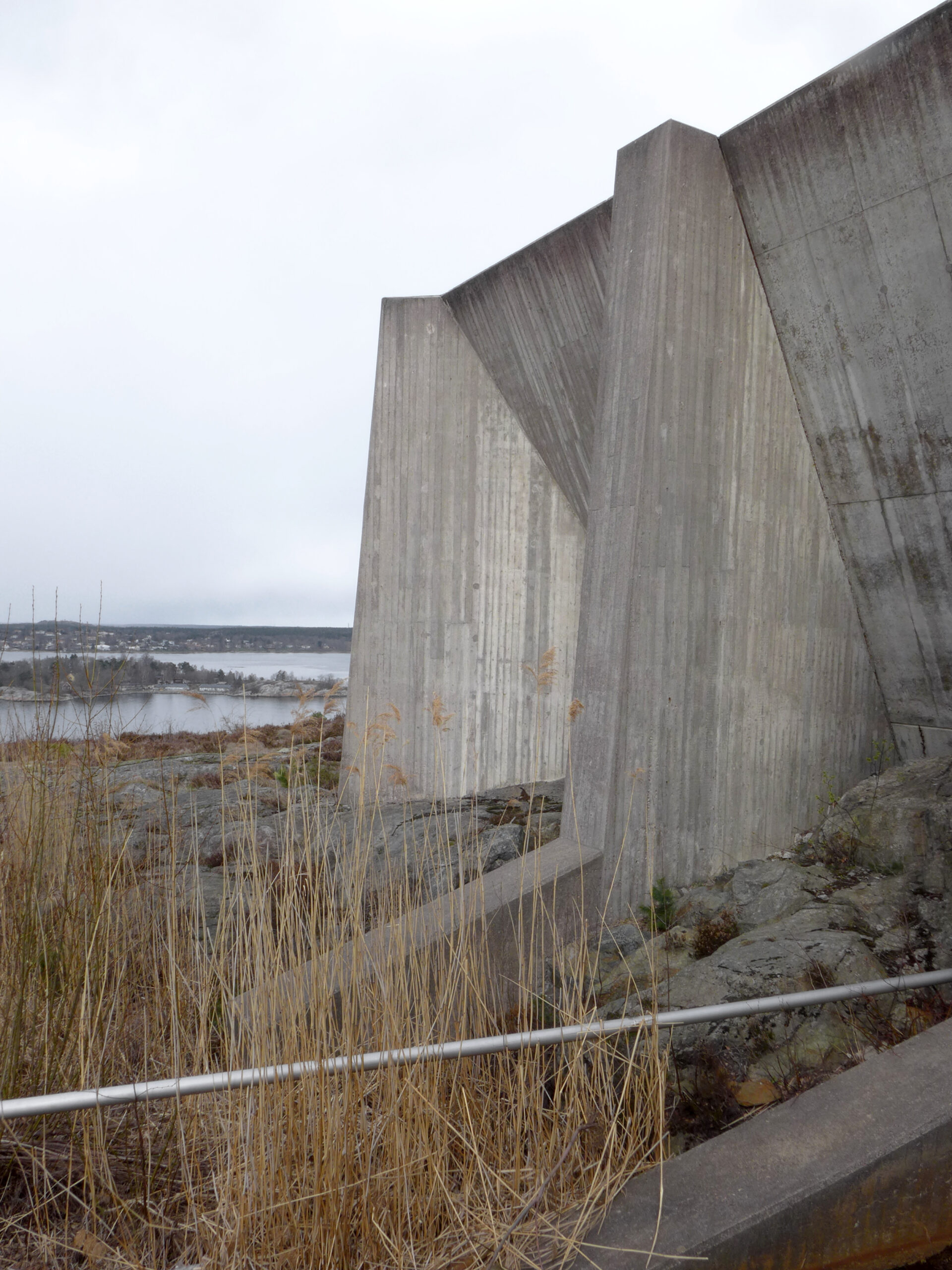
Lucker is a 1st prize winning masterplan competition proposal for the tranformation of Bergs Gård, an oil harbor in Nacka outside Stocholm.
Bergs Gård is centrally located in the Stockholm region but by urban standards it is peripheral both in relation to central Stockholm and central Nacka and the coming subway which is set to become the spine of future development in Nacka.
Lucker seeks an urbanity that doesn’t overlook its regional position but also one that can create new centralities and that has distinct urban qualities that are not based on formal mimicking of inner city urban patterns. Its character comes from its closeness and openness to the landscape. It is generous to those who want to participate in building it, looking to create true diversity.
Lucker aims to do three main things:
– To create a physical structure that can foster a vital peripheral urbanity.
– To develop a planning model that can handle unpredictability and change while creating a clear visual urban character.
– To encourage integration and affordability.
The site contains a set of spectacular exterior and interior rooms that give the area a distinct quality separating it from most other environments. These rooms form a bank of possibilities that doesn’t exist in new construction. While it may not be feasible to keep most of the existing structures, to completely erase them would be to miss out on these possibilities. In LUCKER, two of the cisterns are kept and partly renovated. One is kept as an interior room while the other is opened to the surroundings.
Nacka’s dramatic topography and relation to the sea is one of its greatest assets but also one of its biggest problems when it comes to building a sustainable society. The attractive location boosts housing prices while the dramatic topography separates urban districts from each other, creating isolated islands of concentrated urban wealth.
To try to counter these segregating forces and make housing attainable to a larger share of the population a few concrete measures, compatible with Nacka’s right-leaning politics, are taken:
– Increase supply of buildable land
The site is divided into many plots of different sizes, mostly far smaller than you see in comparable areas today.
– Increase developer diversity
By providing a lot of smaller plots and simple, general planning regulations the field of building is opened to a range of possible actors marginalized within the existing planning paradigm. Small builders can turn into small-scale developers, individuals can join forces and create alternatives to existing housing solutions, challenge conventional economical model and expose the traditional builders to increased competition.
– Build small
Building compactly is paramount in an industry where costs have run rampant. By reserving parts of the plan for small rental apartments the area is opened to some of the people who are having an incredibly tough time finding a place to live today.
– Look beyond the prime locations
Sea views, evening sun, closeness to the water are all nice things that boost prices. When acting in a field ruled by market rules you must look beyond those to find locations that may help increase diversity. Skönviksvägen is such a location on this site.
– Lead by example, don’t overprice land
On a market with a staggering housing deficit where municipalities, developers, banks, real estate agents and secondhand sellers all try to squeeze as much money as possible out of real estate and housing one cannot expect to find reasonably priced places to live. Something has got to give. If the municipality abandons the idea to make the maximum financial gain from each piece of land sold and focus on maximizing built quality greater civic gains can be made.
– Don’t let builders sit on buildable land
Loads of planned land in the Stockholm region is sitting in the vaults of major building contractors waiting for market prices to peak. In return for reasonably priced land the municipality should force the builder to deliver the project within a set time span.